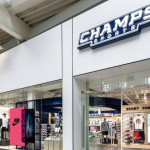adidas expects fashion-driven footwear to be a short-lived trend in the U.S. market and is betting long term on performance as the primary driver of the brand in the U.S. Parent company adidas-Salomon laid out a strategy for the U.S. that puts “additional focus on the premium sporting goods sector” with a Sports Performance message, while it moves to “more aggressively” market its Sports Heritage product at “trend and fashion” distribution points.
On the performance front, adidas will look to basketball and cleated sports, and to a lesser extent, running, to drive sales. In fashion, the brand will expand its owned-retail Originals shop concept located in SOHO to six additional markets in the next year, with the first opening in Miami next month.
The brand appears to be looking at the success at arch-rival Puma and moving to establish its own Euro active beachhead in the states. The company said it will expand distribution “significantly” and broaden its sales team to support the effort on the fashion side. But adidas will need to take a few steps back as it moves to clean up over-distribution of Heritage product and slow-moving Performance footwear currently in the pipeline.
Russ McMullin, head of adidas-Salomon in North America, said, “adidas inventory at retail is higher than we would like in all retail channels.” He blamed the markets move to retro for hurting the strong trends from last years performance trend. The company does not see much change in H2 and said that adidas would provide a special line of fashion, non-technical footwear to be sold through the value channel.
adidas sales in the region did inch up 2.0% in H1 when measured in constant currency, but fell 17% in the companys Euro reporting currency. The troubling number is the futures backlog, which fell 12% in constant currency for the brand in North America, with footwear down 11% and apparel down 14%. McMullin said futures were “down in all retail channels”.
Globally, adidas sales in the second quarter dipped 7.1% to 1.14 billion, or $1.3 billion. Sales increased 3.0% in constant currencies. First half sales grew 10% in constant currencies, but were off 0.5% measured in Euros.
In Europe, where the performance story plays much better for the brand, currency-neutral sales for H1 jumped 11%, or +8% in Euros, to 1.5 billion ($1.66 bn). The gains were seen across the continent as well as the U.K. and emerging markets, led by a 50% gain in running and a 10% upside in the training category.
At the TaylorMade-adidas Golf unit, the company said it saw a rally in the second quarter that enabled the division to post a 7.0% gain in currency-neutral sales despite the loss of the Slazenger business that was in the numbers last year. On a continuing business basis, sales in the TM-aG division in North America jumped 17% for the quarter. TM-aG saw margins dip 170 basis points to 47.3% for the half, but was up 170 bps in Q2 to almost 50.0%
Salomons gross margin improved by 180 basis points in H1 to 36.4%, primarily from product mix improvements at Mavic. Sales for both the half and Q2 were helped by strength in Asia, where currency-neutral sales grew 44% in the quarter and 17% for the half.
On a category basis, worldwide Footwear sales were up 17% for the first half on a constant currency basis and up 5.0% when measured in Euros. Apparel was up 1.0% currency-neutral, but off 7.0% in Euros. Hardlines took a hit from the Slazenger issue and were off 1.0% in constant currencies and down 12% in Euros.
Second quarter sales for the total adidas-Salomon group grew 3.0% on a currency neutral basis, but the strengthening Euro cut into results, with reported sales down 7.6% in Euros. Worldwide sales for the first half were down 2.6% in Euros, but up 8.0% in constant currency terms.
Despite the issues with exchange rates, net income for the company grew 26.8% for the second quarter and 22.0% for the half, reflecting tighter controls, primarily in its debt line, where the company converted much of its shorter term bank debt to long-term commercial and private paper.
Inventories were up just 1.0% currency-neutral at quarter-end and receivables were up just 4.0% on the same basis.
Looking ahead, adidas-Salomon re-affirmed its outlook for group sales to increase approximately 5.0% on a currency-neutral basis for the year. Earnings are projected to increase between 10% and 15% for the year.













